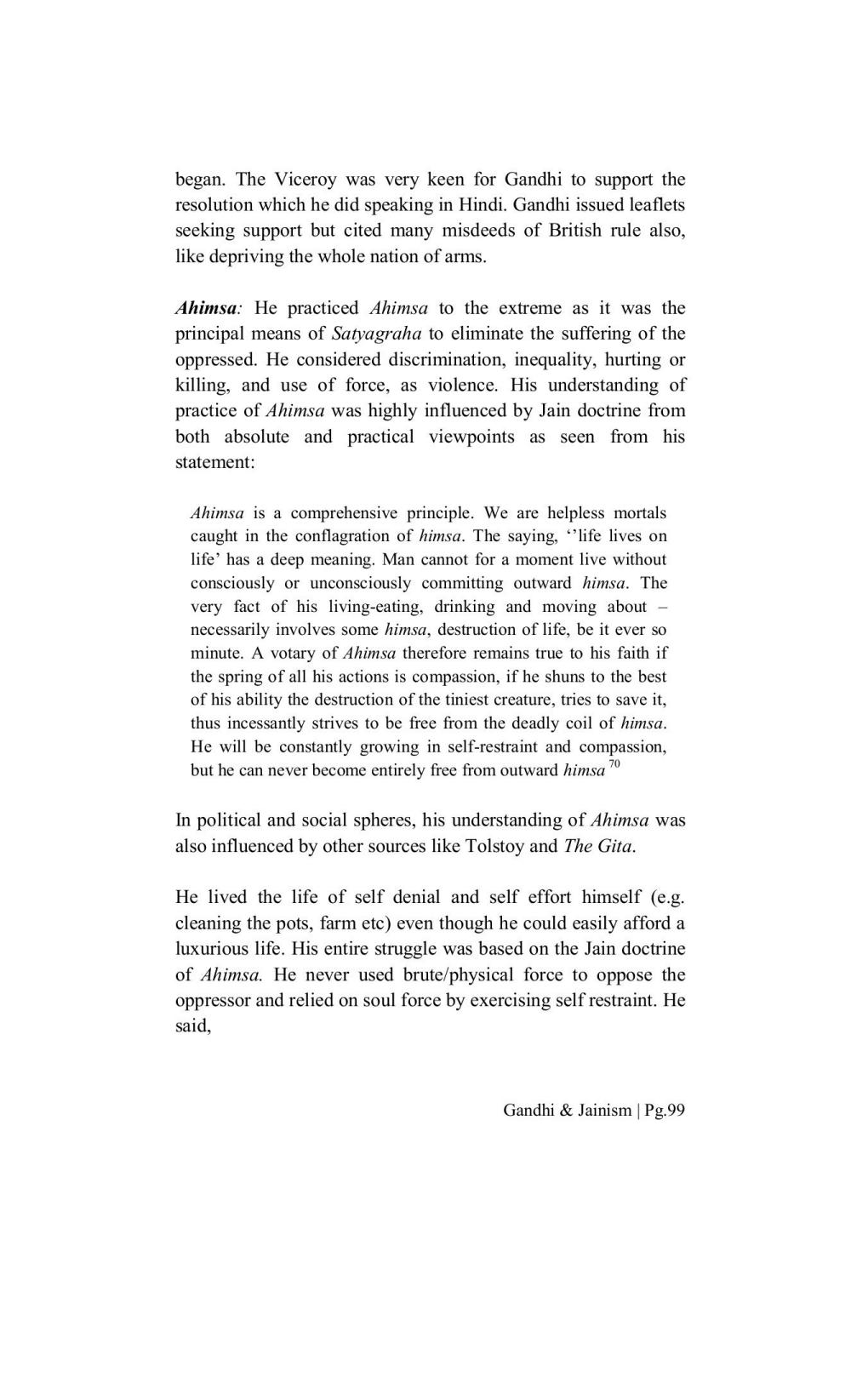________________
began. The Viceroy was very keen for Gandhi to support the resolution which he did speaking in Hindi. Gandhi issued leaflets seeking support but cited many misdeeds of British rule also, like depriving the whole nation of arms.
Ahimsa: He practiced Ahimsa to the extreme as it was the principal means of Satyagraha to eliminate the suffering of the oppressed. He considered discrimination, inequality, hurting or killing, and use of force, as violence. His understanding of practice of Ahimsa was highly influenced by Jain doctrine from both absolute and practical viewpoints as seen from his statement:
Ahimsa is a comprehensive principle. We are helpless mortals caught in the conflagration of himsa. The saying, 'life lives on life' has a deep meaning. Man cannot for a moment live without consciously or unconsciously committing outward himsa. The very fact of his living-eating, drinking and moving about - necessarily involves some himsa, destruction of life, be it ever so minute. A votary of Ahimsa therefore remains true to his faith if the spring of all his actions is compassion, if he shuns to the best of his ability the destruction of the tiniest creature, tries to save it, thus incessantly strives to be free from the deadly coil of himsa. He will be constantly growing in self-restraint and compassion, but he can never become entirely free from outward himsa"
In political and social spheres, his understanding of Ahimsa was also influenced by other sources like Tolstoy and The Gita.
He lived the life of self denial and self effort himself (e.g. cleaning the pots, farm etc) even though he could easily afford a luxurious life. His entire struggle was based on the Jain doctrine of Ahimsa. He never used brute/physical force to oppose the oppressor and relied on soul force by exercising self restraint. He said,
Gandhi & Jainism Pg.99




